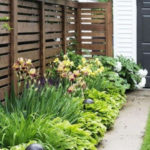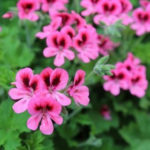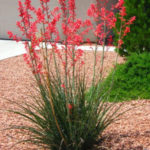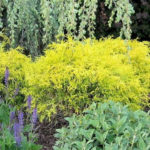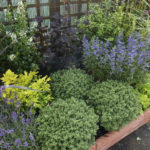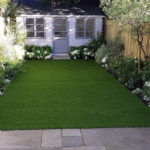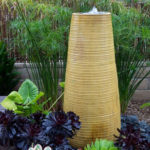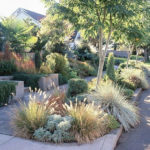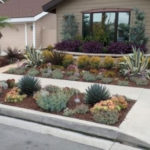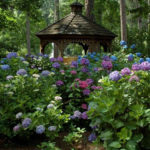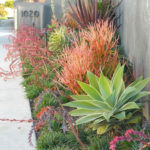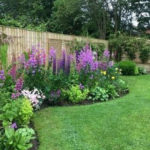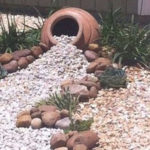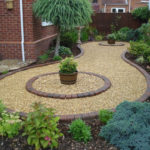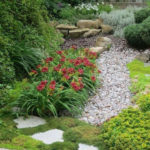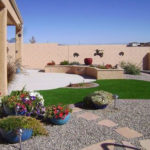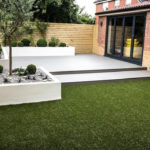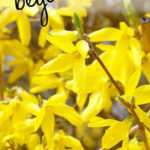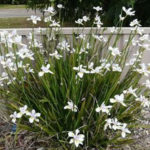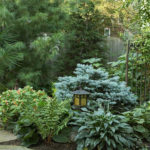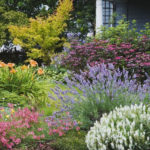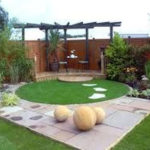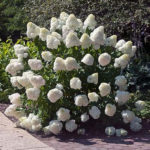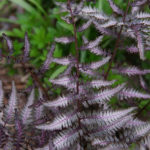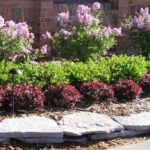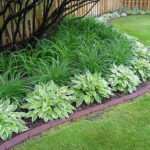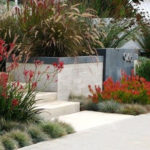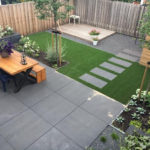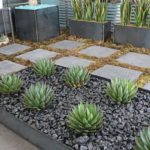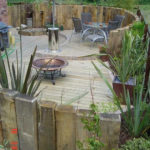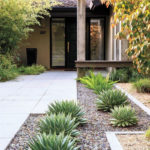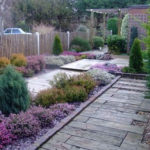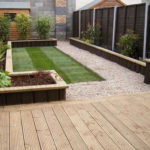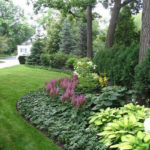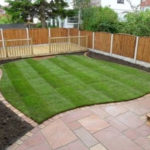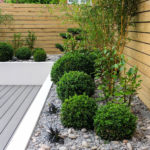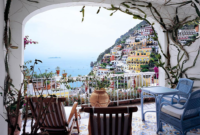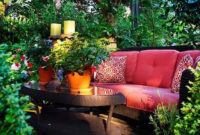Some garden styles lend themselves particularly well to low maintenance gardening. They often rely on a visually pleasing use of hard landscaping elements combined with a minimum of well chosen planting.
A minimalist garden
It is possible to create a striking garden using very little at all. The garden elements can be paired down to the absolute minimum and anything fussy, distracting or unnecessary can be excluded from the scheme.
A garden on relies on minimal planting will be the most labour saving of all, but you need to choose carefully. The few plants used must work hard to earn their place there.
Using Space
Form and space are what matter in a minimal design. Anyone embarking on such a totally labour saving design will need an eye for shape and contrast, so that the garden is pleasing to the eye, yet uncluttered.
The design will rely on the clever use of space, defined by a few strategically placed features, such as pots, stones, statues or plants, or a bold architectural feature such as a wall.
Simple dramatic juxtapositions can create sufficient interest. For instance, a paved or gravelled area can become a visually please space with the addition of just a few carefully sited large pots containing some architectural plants, or perhaps a raised bed or pool. Pebbles or boulders can be used to add extra texture, and perhaps some flowering annuals will add a splash of summer colour.
Adding Colour
Colour in the form of painted surfaces can also be used for impact in a minimalist garden, perhaps on a large wall or the edges of a raised bed. It can be used to compliment planted gravel or an expanse of paving.
Positioning Plants And Pebbles
A few good plants can go along way if they are carefully positioned to create form in an open space. They need to be dramatic in shape or colour so that they make an impact on the design. Architectural plants such as phormiun, Yucca, bamboo clumps or even small trees all work well, especially when used in isolation. Pebbles are also a good way to introduce additional texture. They work particularly well in areas of paving or with potted plants.
Gravel And Paved Gardens
Gardens that rely heavily on paving or gravel instead of lawn can be virtually maintenance-free. They need to be well planned, however, to avoid them looking oppressive and harsh. The solution is to include a variety of materials to create contrasting shapes and textures, and to compliment this with the planting. Even the simplest of designs can be transformed into a garden full of charm and character.
Designing with hard materials
Different materials can be used effectively to divide a large area into smaller sections, creating interest through changes of texture, and even height if you introduce features such as raised beds. Formal structures usually work best for paving, especially for space bounded by walls. Bricks can be laid in attractive patterns, adding colour and warmth to a design. The small dimensions of bricks will create a satisfying contrast when juxtaposed with large paving slabs. Granite setts, cobbles and brick or clay pavers can also be laid in interesting patterns.
Gravel, which has a softer texture than hard paving, adds another type of contrast. It works with both formal lines and informal designs as it lends itself to curves. There are lots of different gravels available in many colours and grades. Choose one, or several, that will suit your design.
Additional Features
Including other features in paving or gravel gardens adds yet more interest. Ponds or fountains introduce the elements of water. Statues, large containers and even benches all make excellent focal points.
Incorporating Plants
Beds and borders can easily be incorporated into gravel and paved gardens. If you do not want to be bothered with maintaining large planted areas, you can create small filled spaces within the gravel or paving.
Beds can be filled with some low maintenance ground cover plants, but focal plants may also be desirable to draw the eye, especially during the winter. Architectural plants, such as Cordyline Australis (for warmer winters), or yucca Gloriosa (for cooler areas), work well as focal plants. Clipped box (buxus sempervirens) is useful for formal designs. Two or three clips during the growing season are sufficient to keep it in shape. Containers are another option, but they will require daily watering in summer unless you install an automatic watering system.

